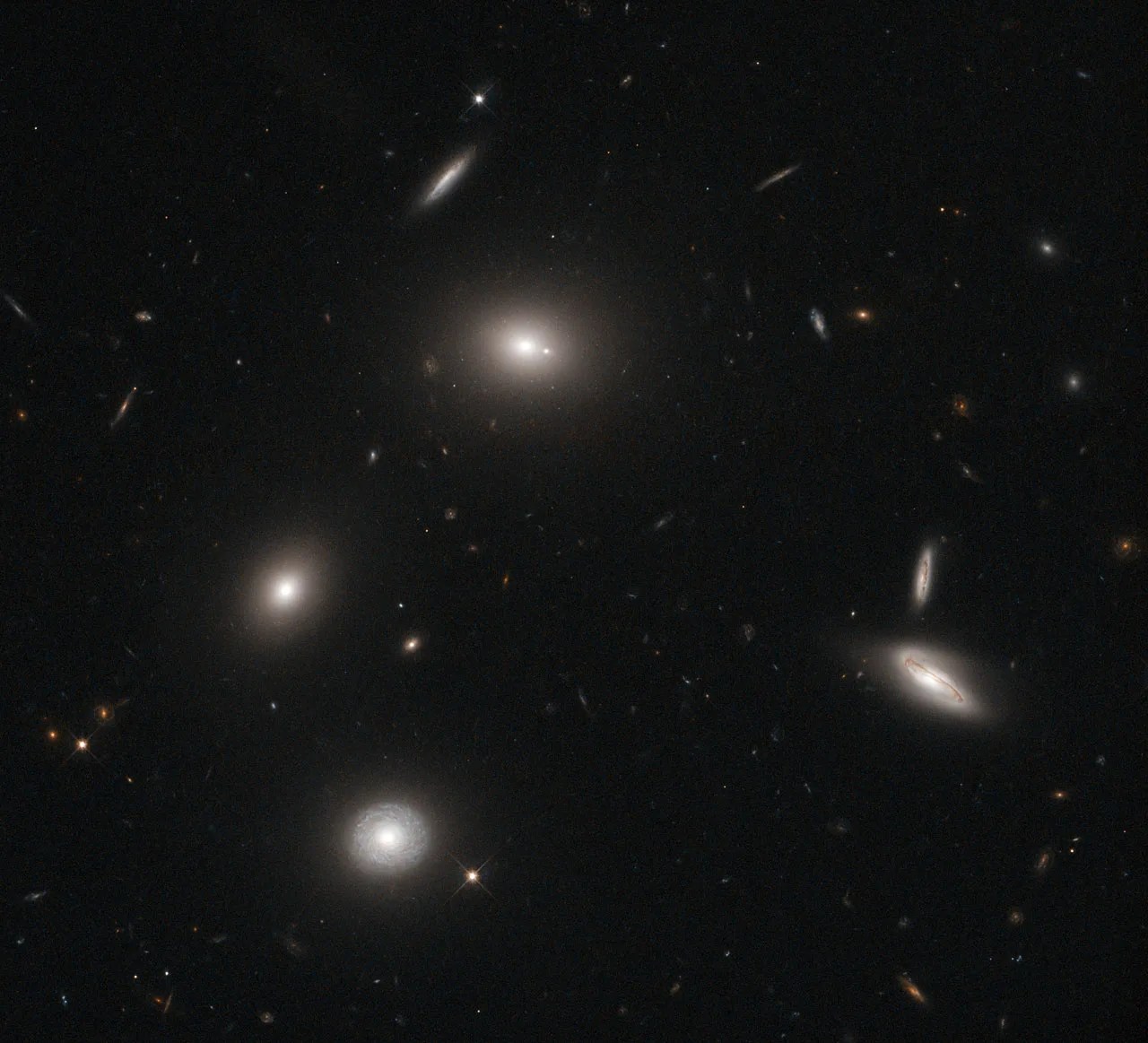2 min read
Luminous galaxies glow like fireflies on a dark night in this image snappedby the NASA/ESA Hubble Space Telescope. The upper central galaxy in thisimage is a gigantic elliptical galaxy designated 4C 73.08. A prominentspiral galaxy seen from "above" shines in the lower part of the image, whileexamples of galaxies viewed edge-on also populate the cosmic landscape.
In the optical and near-infrared light captured to make this image, 4C 73.08does not appear all that beastly. But when viewed in longer wavelengths thegalaxy takes on a very different appearance. Dust-piercing radio wavesreveal plumes emanating from the core, where a supermassive black hole spewsout twin jets of material. 4C 73.08 is classified as a radio galaxy as aresult of this characteristic activity in the radio part of theelectromagnetic spectrum.
Astronomers must study objects such as 4C 73.08 in multiple wavelengths inorder to learn their true natures, just as seeing a firefly's glow wouldtell a scientist only so much about the insect. Observing 4C 73.08 invisible light with Hubble illuminates galactic structure as well as the agesof constituent stars, and therefore the age of the galaxy itself. 4C 73.08is decidedly redder than the prominent, bluer spiral galaxy in this image.The elliptical galaxy's redness comes from the presence of many older,crimson stars, which shows that 4C 73.08 is older than its spiral neighbor.
The image was taken using Hubble's Wide Field Camera 3 through two filters:one which captures green light, and one which captures red and near-infraredlight.
Credit: ESA/NASA/Hubble








